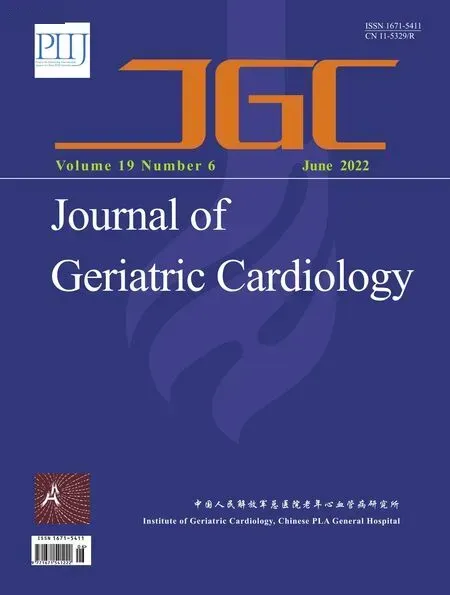Transplant-associated thrombotic microangiopathy: a rare but deadly complication post orthotopic heart transplantation
Jose Ruiz-Morales?, Maedeh Ganji, Rohan Goswami
1. Division of Advanced Heart Failure & Transplant Cardiology, Mayo Clinic, Jacksonville, Florida, USA; 2. Cardiology Department, University of Florida, Jacksonville, Florida, USA
Thrombotic microangiopathy (TMA) is potentially life-threatening condition caused by small-vessel microthrombi and is associated with schistocyte formation, low platelets and end-organ damage that may not be reversible.[1,2]As a life-threatening condition, TMA recognition in hospitalized patients after organ transplantation is key to improving survival. Transplant-associated TMA(TATMA) can occur after both solid organ or hematopoietic stem cell transplantation and often mimics other disease processes such as thrombotic thrombocytopenic purpura (TTP) with similar constellation of symptoms during presentation. We present a rare case of a patient with TATMA after orthotopic heart transplantation.
A 63-year-old male who underwent orthotopic heart transplantation in the setting of recalcitrant ventricular arrhythmias four months prior was admitted after routine surveillance endomyocardial biopsy demonstrated ISHLT (International Society for Heart and Lung Transplantation) grade 3B rejection without Quilty lesions for medical therapy. His baseline immunotherapy included azathioprine 75 mg once daily, sirolimus 2 mg once daily, prednisone 15 mg once daily. He was converted to sirolimus due to renal failure from tacrolimus. He was compliant with medical therapy after transplant and had no previous rejection episodes.
During his two-month surveillance follow-up, it was noted that he had asymptomatic low grade 1B rejection on biopsy; however, he was noted to have acute on chronic kidney injury given rise in creatinine compare to his baseline. At that time, his tacrolimus was switched to sirolimus. Five days later, the patient developed acute diffuse rash associated with fever. Dermatology performed a biopsy, showing non-diagnostic purpura with no signs of drug reaction. During hospital course three days later, he developed worsening thrombocytopenia with a decrease in his platelet count 26,000 (on admission 166,000), lactate dehydrogenase rose to 881 U/L, and haptoglobin was 14 mg/dL.
Further diagnostic workup showed peripheral schistocytes and progressive anemia. Worsening renal failure was noted with peak creatinine of 3. Given the patient had concern for the hemolytic uremic syndrome/TTP, hematology was consulted.ADAMTS13 activity was found to be 36%. Direct coombs testing was negative. As a result, atypical TTP was considered, the patient underwent six days of plasmapheresis with no significant platelet response. He continued to have high dose intravenous solumedrol of 125 mg twice daily for one week, then 60 mg intravenous twice daily for one week. He also underwent repeat transthoracic echocardiogram and endomyocardial biopsy that were negative for acute allograft dysfunction or rejection. Furthermore,repeat the human leukocyte antigen testing was not significant for newly formed donor specific antibodies.
Due to concern for calcineurin inhibitor and mTOR inhibitor toxicity, both tacrolimus and sirolimus were discontinued. Levels persisted for seven days after last dose. Platelet count did not respond to slow taper or rituximab. Eculizumab was started and patient was discharge without any further complications and currently in stable state.
Very limited case reports can be found regarding TATMA. Given the limitation in case reports, medical management can be very difficult and could lead to delay in treatment for the patients. Although the pathophysiology of TATMA remains unclear, an increased risk of TATMA is thought to derive from the coincidence of several factors: an underlying susceptibility, endothelial damage from chemotherapy and radiation, and transplant risk factors, including use of calcineurin inhibitors, graft-versushost disease, degree of the human leukocyte antigen mismatch, and invasive infections such as bacteremia.[3]Clinical recognition of TATMA is difficult because cytopenias and organ dysfunction are common in the post-transplant period and can have multifactorial causes, including drugs, infections, and graft-versus-host disease.[4]Different consensus criteria have been proposed by the Blood and Marrow Transplant Clinical Trials Network and the International Working Group, but validation remains a challenge in the absence of a gold standard for diagnosis.[5]In our case, we were able to manage patient by stopping calcineurin inhibitor and giving induction agents for cellular regeneration but at the same time gave trial of steroids and plasmapheresis given concern for similar entities to TATMA like TTP and the hemolytic uremic syndrome. Eculizumab has been proven to be effective in small case series and was proven to be effective as well in our patient.[6]Further studies need to be performed in order to establish goal standard therapy with the possibility of eculizumab as one of the potential drugs for management of TATMA.
ACKNOWLEDGMENTS
All authors had no conflicts of interest to disclose.
 Journal of Geriatric Cardiology2022年6期
Journal of Geriatric Cardiology2022年6期
- Journal of Geriatric Cardiology的其它文章
- Association between antiplatelet medication and cerebral microbleeds in stroke-free population
- Association between clustering of cardiovascular risk factors and resting heart rate in Chinese population: a cross-sectional study
- Effects of chronic obstructive pulmonary disease on longterm prognosis of patients with coronary heart disease postpercutaneous coronary intervention
- Efficacy of comprehensive remote ischemic conditioning in elderly patients with acute ST-segment elevation myocardial infarction underwent primary percutaneous coronary intervention
- Normalizing the dementia status in cardiovascular diseases:a perspective
- Acute myocardial infarction complicated with takotsubo syndrome in an elderly patient: case report and literature review
